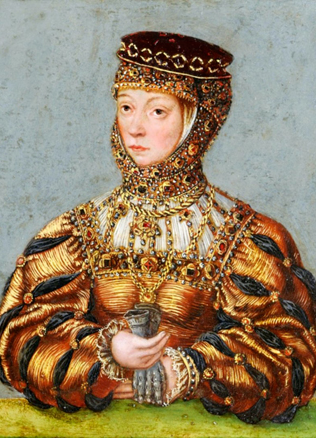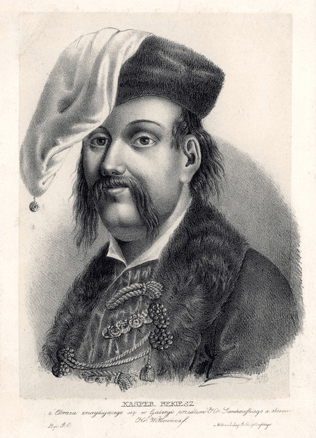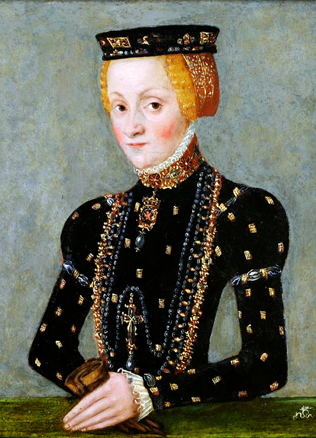Title offices in the Ruler’s court: the cupbearer, the butler, the slicer
The German theologian and philosopher of the 14th century Conrad of Megenberg in his work Economics noted that kings and dukes differed from other seigniors in that they had a developed organisation of the court. The structure of the court with the system of offices was formed in Western Europe in the mature Middle Ages, however, its sources go back to the times of Frankish rulers. Offices of the court originated from the household of the rulers and the main turning point occurred when these offices became title ones and the representatives of the nobility rather than the servants of the household were entrusted with filling them. We find this situation in the Carolingian Era when the offices of the court meant functions of individual noblemen rather than those of the servants. Then no fixed number of offices of the court existed yet: for example, eight offices are distinguished in the work of Hinkmar of Reims and more names can be found in other works. Nonetheless, the court of Charles the Great and his heirs with the organisation of the officers of the court and the court chapel became a model for the courts of later European kings and dukes. In the 16th–17th centuries, the model of four main court offices became established in the Holy Roman Empire and other European states: the chamberlain (camerarius), the butler (dapifer) [the servant that brings the meat to the table at a meal], the cup-bearer or senešalas (pincerna) and the marshal (marschalcus). In the 13th century master of the culinary arts (magister coquinae) and the court-master (magister curiae) who became a senior officer of the court appeared. All these were title offices, in some places they were even inherited, but everyday functions in the court were carried out by the official people of lower origin. This organisational structure of the main offices of the court with local peculiarities existed in Christian Europe and was a distinguishing feature of the Ruler’s court.
Duties become offices
The situation was the same at the end of the 14th century when following the baptism of the country, a take-over of the European political and social structure intensified in Lithuania and the first hints about the title offices were made in the Duke’s court. There were different offices in the Ruler’s court before the baptism too, however, people belonging to the surroundings of the Lithuanian rulers were usually characterised in the earlier sources according to the military, economic or diplomatic tasks they performed (“envoys”, “providers”, “commissioners”, etc.). Works of the early Lithuanian historiography mention Algirdas’ and Jagiełło’s servants of low origin – camararii (kambariniai [officers in charge of royal household]), falconers, and lamplighters. It was only in the second half of the 14th century that several officials of the court appeared in the surroundings of the Dukes – brothers Karijotaičiai, the descendants of the Gediminas – who ruled Podolia and who established close relations with the Kings of Poland and Hungary.
Following the example of the Rulers’ court and official organisation of Europe, Grand Duke Vytautas started to create the institutional structure of the court in Lithuania.
Having experience of living in the state of the Teutonic Order and communicating with the nobles of Europe (who arrived to take part in the trips to Lithuania) he clearly understood that a personal organisation of the court was a necessary attribute of the sovereign ruler, the sign of his power. Therefore, it is not by chance that we heard about the first office of the court in Lithuania soon after Vytautas could begin to strengthen his power in the country on the basis of the 1392 Ostrów or Astrava Agreement. The Marshal of Vytautas’ court, the nobleman Stanislovas Čupurna who had his patrimonial estates in Šalčininkai region appeared in the 1395 sources.
Do You Know?
The office of the Marshal lost its significance in the Late Middle Ages (in Frankish times marescalcus meant a horse marshal (pferdemarschalk). At that time the marshal was in essence the chief manager of the court’s affairs therefore it is understandable that first of all it was mentioned in the surroundings of Vytautas.
Adaptation of the structure of the European court
Other court offices are found in the sources of Vytautas times only sporadically. Treasury income and expenditure books, which were a main source in reconstructing the internal organisation of courts were not kept yet. Therefore, the office found in the sources for the first time indicates the time of its appearance. However, even on the basis of scarce and accidental sources we find all classical offices of the European court (with the exception of that of the butler (dapifer) in Vytautas’ court. And what is more, like the majority of other kings and dukes of the late Middle Ages, Vytautas somewhat expanded the traditional system of the court officials: the 1398 sources mention the court’s horse marshal (pferdemarschalk) Jan Nemira, the 1409 sources mention the court’s cup-bearer Sudimantas and the master of the culinary arts (magister coquina) Mikalojus, the 1413 sources write about the standard-bearer Stanisław Dowgiało, and the chief chamberlain (camerarius) Jerzy Strumiłło appears in the sources of 1428. The system of title offices of the court of the Ruler of the Grand Duchy of Lithuania finally formed in the times of Casimir and Alexander Jagiellon, when the offices of the butler (Albertas Jonaitis Manvydas was the first one, 1475), the slicer (Tautvilas Mantautaitis,1481),the sword bearer (Albertas Ivaškevičius, 1496), the hunter (Miška Vieštartaitis, 1466) were added to the earlier known ones. In the long run, assistants to these officials appeared – the vice-cupbearer, the vice-butler and others.
Usually these title offices were given to the younger members of the relatives of more distinguished noblemen who started their service and official career in the ruler’s court.
Do You Know?
Having created the organisational structure that was common in European courts, Vytautas clearly demonstrated his aspiration to belong to the family of independent kings and dukes of Europe. Despite the fact that in later years of personal and real union with Poland the court of the Grand Duke of Lithuania will lose its significance, the created organisation of title offices will survive in the Grand Duchy of Lithuania until the divisions at the end of the 18th century. Even more, in the long run, analogous offices will appear in the courts of more distinguished noblemen and the districts of the nobility of the Grand Duchy of Lithuania. Of course, they had absolutely nothing in common with the court’s organisation and real functions, and sooner they reflected the desire of the nobility to take part in a colourful hierarchial world of offices and titles. Therefore, we read about the butler of Navahrudak and the slicer of Ashmyany in the sources who distinguished themselves at least to a small degree for these offices in society of the nobility of the district though they had no specific tasks and rights.
Rimvydas Petrauskas



